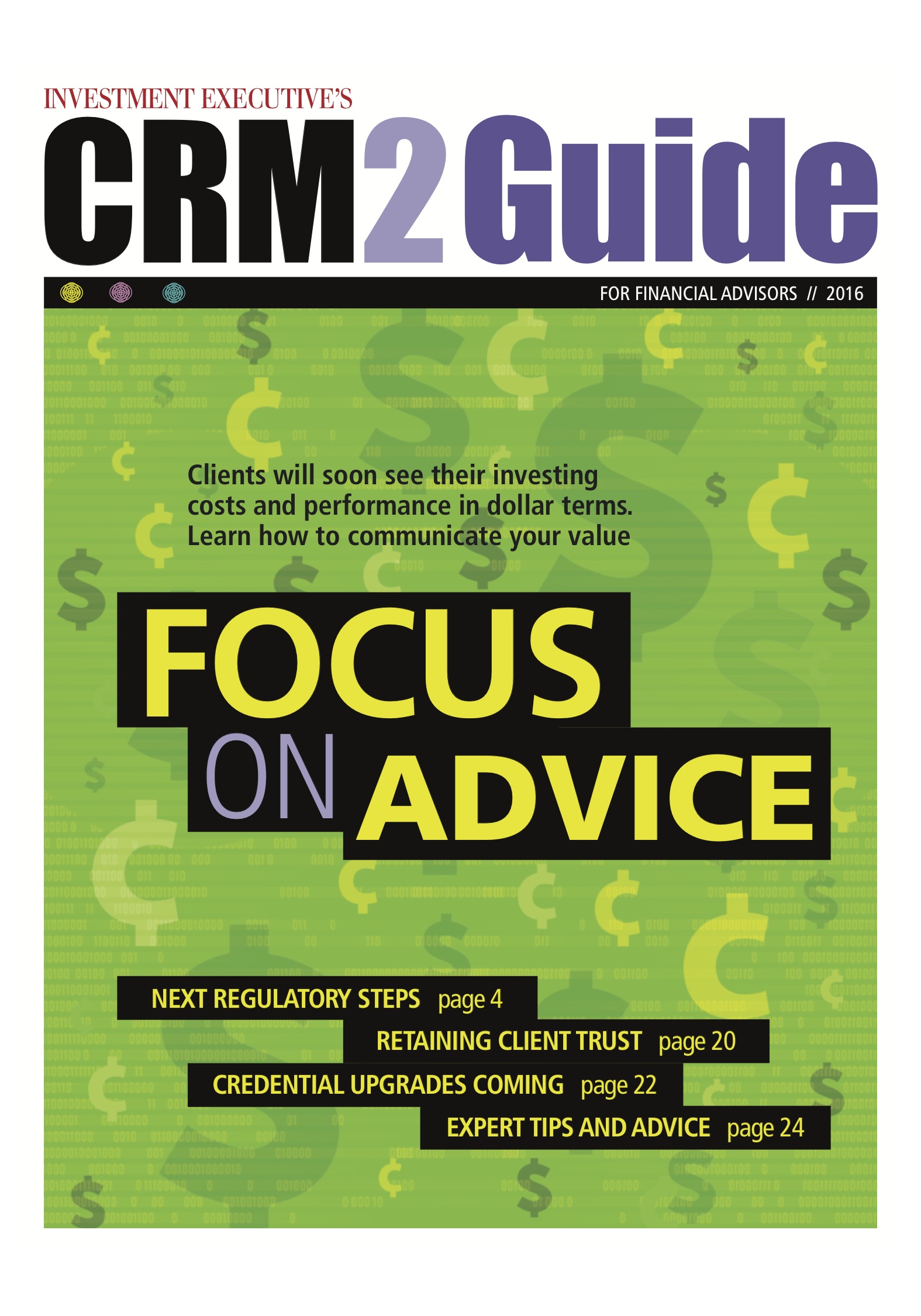
Given today’s reality of low investment returns and transparent fees, financial advisors should ensure their clients understand the full value of the services advisors provide, said Keith McLean, president and chief investment officer of Toronto-based Sphere Investment Management Inc., during a panel discussion at Investment Executive’s third annual CRM2 Breakfast Seminar in Toronto on Tuesday.
With clients receiving new compensation reports in early 2017, advisors will have to consider the value they provide to their clients in exchange for the fees they charge — and be prepared to tout the guidance they provide in areas such as tax and estate planning, McLean noted.
Investors cannot expect the high returns of previous years. Although the S&P 500 composite index returned 11.5% annually, on average, over the past three decades, research from firms that include J.P. Morgan Chase & Co. and the Bank of New York Mellon Corp. suggests that future average annual returns will range from 4.3% to 5.7%, he said.
“Charging 2% for [a return of 11%] is easy money. Charging 2% for … a balanced account that’s going to generate between 4% and 6% over the coming period is going to be that much more difficult without a differentiating value proposition,” McLean said.
Advisors who are unable to demonstrate a more holistic service offering may find themselves in a negotiation battle with their clients once compensation reports are delivered, according to Darrell Campfield, another panelist and vice president of strategic solutions with Toronto-based Broadridge Financial Solutions (Canada) Inc.
“[Compensation reports are] going to drive fees to be more competitive,” said Campfield. “In many cases, advisors will be able to defend their value proposition and in [other] cases, the easier choice [for some advisors] is to say ‘I’ll lower your fees’.”
The possibility of this would have a “waterfall” effect that would affect revenue within the investment industry and place pressure on the cost structure of investment advice, he added.
McLean also tackled a current industry trend in which financial services firms are targeting high net-worth individuals with more than $1 million in investible assets. However, the mass affluent population that has between $100,000 and $1 million in investible assets could produce higher margins and profits for advisors and their firms, he suggested.
McLean’s research indicates that the margin produced by mass affluent clients’ investible assets be slightly more than double that of high net-worth clients (53 basis points vs 25 basis points, respectively).
“The margins you make on the smaller accounts are higher, but they are tougher to manage,” McLean said.
This is where the possible implementation of a robo-advisory offering can help advisors nurture and maintain relationships with mass affluent investors rather than avoiding them altogether.
The additional opportunity here is that the wealth-management’s push for high net-worth investors is creating a significant number of underserved Canadians, according to McLean.